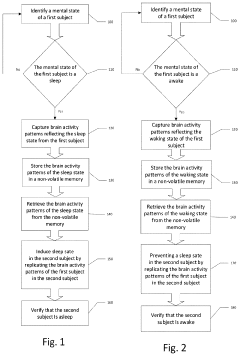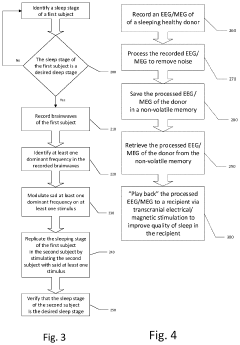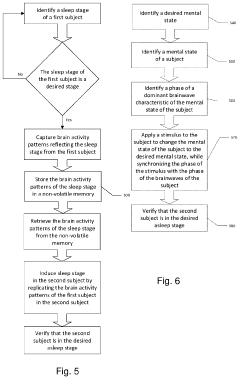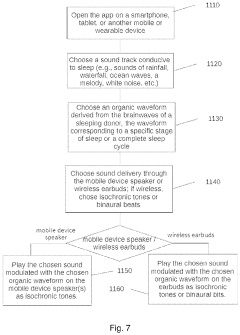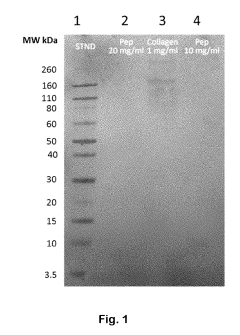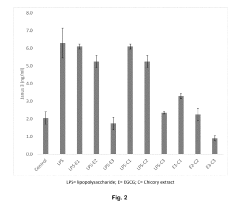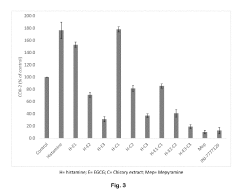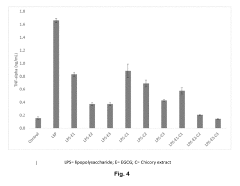Hypertonic Influence on Sleep Quality: Latest Findings
Hypertonic Sleep Impact Research Background
The study of hypertonic influence on sleep quality has gained significant attention in recent years, as researchers explore the intricate relationship between physiological factors and sleep patterns. This field of research emerged from the growing recognition that sleep disorders and poor sleep quality are prevalent issues affecting a large portion of the global population, with far-reaching consequences on health, productivity, and overall well-being.
The background of this research can be traced back to early observations of the impact of various physiological states on sleep. However, it was not until the advent of more sophisticated monitoring technologies and a deeper understanding of sleep physiology that researchers began to focus specifically on the role of hypertonicity in sleep quality. Hypertonicity, characterized by an abnormally high muscle tone or tension, has been increasingly recognized as a potential factor influencing various aspects of sleep.
Initial studies in this area primarily focused on the effects of muscle tension and stress on sleep initiation and maintenance. As the field progressed, researchers began to explore more nuanced aspects of hypertonicity, including its impact on sleep architecture, circadian rhythms, and the overall restorative function of sleep. This shift in focus was driven by advancements in sleep monitoring technologies, such as polysomnography and actigraphy, which allowed for more detailed analysis of sleep patterns and physiological states during sleep.
The importance of this research lies in its potential to address a wide range of sleep-related issues. Poor sleep quality has been linked to numerous health problems, including cardiovascular diseases, metabolic disorders, cognitive impairment, and mental health issues. By understanding the role of hypertonicity in sleep quality, researchers aim to develop more effective interventions and treatments for sleep disorders, potentially improving the health outcomes for millions of individuals worldwide.
Recent findings in this field have highlighted the complex interplay between hypertonicity and various sleep parameters. Studies have shown that increased muscle tension can lead to difficulties in falling asleep, more frequent awakenings during the night, and alterations in sleep stage distribution. Additionally, researchers have begun to explore the bidirectional relationship between hypertonicity and sleep, investigating how poor sleep quality may, in turn, contribute to increased muscle tension and physiological stress.
The research background also encompasses investigations into the underlying mechanisms by which hypertonicity affects sleep. This includes studies on the role of neurotransmitters, hormonal changes, and autonomic nervous system activity in mediating the effects of muscle tension on sleep quality. Such mechanistic insights are crucial for developing targeted interventions and therapies to improve sleep in individuals affected by hypertonicity-related sleep disturbances.
As the field continues to evolve, researchers are increasingly focusing on personalized approaches to addressing sleep issues related to hypertonicity. This includes exploring individual differences in susceptibility to hypertonic influences on sleep and developing tailored strategies for managing muscle tension and promoting relaxation to enhance sleep quality.
Sleep Quality Market Analysis
The sleep quality market has experienced significant growth in recent years, driven by increasing awareness of the importance of sleep for overall health and well-being. This market encompasses a wide range of products and services, including sleep tracking devices, mattresses, pillows, sleep aids, and sleep therapy solutions. The global sleep aids market size was valued at USD 78.7 billion in 2021 and is projected to grow at a compound annual growth rate (CAGR) of 7.1% from 2022 to 2030.
The rising prevalence of sleep disorders, such as insomnia, sleep apnea, and restless leg syndrome, has been a key factor fueling market growth. According to the American Sleep Association, 50-70 million US adults have a sleep disorder, with insomnia being the most common. This has led to increased demand for both pharmaceutical and non-pharmaceutical sleep aids, as well as diagnostic and monitoring devices.
The COVID-19 pandemic has further accelerated market growth, as stress, anxiety, and changes in daily routines have negatively impacted sleep patterns for many individuals. This has resulted in a surge in demand for sleep-related products and services, particularly in the digital health and telemedicine sectors.
In terms of product segments, the sleep tracking devices market has shown particularly strong growth. These devices, which include wearables, bedside monitors, and smartphone applications, are gaining popularity due to their ability to provide detailed insights into sleep patterns and quality. The global sleep tracker market size was valued at USD 12.5 billion in 2020 and is expected to expand at a CAGR of 18.1% from 2021 to 2028.
Geographically, North America dominates the sleep quality market, followed by Europe and Asia Pacific. The United States, in particular, holds a significant market share due to high healthcare expenditure, advanced healthcare infrastructure, and a large population suffering from sleep disorders. However, emerging economies in Asia Pacific, such as China and India, are expected to witness the fastest growth in the coming years, driven by increasing disposable income, growing awareness of sleep health, and improving healthcare infrastructure.
The market is characterized by intense competition, with key players including ResMed, Philips Respironics, Fitbit (now part of Google), and Sleep Number Corporation. These companies are focusing on product innovation, strategic partnerships, and mergers and acquisitions to maintain their market position and expand their product offerings.
Current Challenges in Hypertonic Sleep Studies
The field of hypertonic sleep studies faces several significant challenges that hinder progress in understanding the complex relationship between hypertonicity and sleep quality. One of the primary obstacles is the difficulty in accurately measuring and controlling hypertonicity levels during sleep. Current methods often rely on indirect measurements or invasive techniques, which can disrupt natural sleep patterns and potentially skew results.
Another challenge lies in the multifaceted nature of sleep itself. Sleep comprises various stages and cycles, each with distinct physiological characteristics. Researchers struggle to isolate the specific effects of hypertonicity on individual sleep stages, making it challenging to draw conclusive correlations between hypertonicity and overall sleep quality.
The variability in individual responses to hypertonicity further complicates research efforts. Factors such as age, gender, underlying health conditions, and genetic predispositions can significantly influence how hypertonicity affects sleep. This heterogeneity makes it difficult to establish standardized protocols and draw universally applicable conclusions.
Ethical considerations also pose challenges in hypertonic sleep studies. Inducing hypertonicity in human subjects for extended periods may have potential health risks, limiting the scope and duration of experiments. As a result, many studies rely heavily on animal models, which may not fully translate to human sleep patterns and responses.
Long-term effects of hypertonicity on sleep quality remain largely unexplored due to the logistical and financial constraints of conducting prolonged studies. This gap in knowledge hampers our understanding of how chronic exposure to hypertonic conditions might impact sleep patterns and overall health over time.
Technical limitations in sleep monitoring equipment also present obstacles. While polysomnography remains the gold standard for sleep studies, it is resource-intensive and may not capture subtle changes in sleep architecture induced by hypertonicity. More advanced, non-invasive monitoring technologies are needed to provide comprehensive data without disturbing natural sleep patterns.
Lastly, the interdisciplinary nature of hypertonic sleep research presents challenges in integrating findings from various fields such as neurology, endocrinology, and physiology. Bridging these diverse areas of expertise to form a cohesive understanding of hypertonic influences on sleep quality requires improved collaboration and communication among researchers from different disciplines.
Hypertonic Sleep Assessment Methods
01 Hypertonic solutions for improving sleep quality
Hypertonic solutions can be used to improve sleep quality by regulating the body's fluid balance and promoting relaxation. These solutions may contain electrolytes and minerals that help maintain proper hydration levels, potentially leading to better sleep patterns and overall sleep quality.- Hypertonic solutions for improving sleep quality: Hypertonic solutions can be used to improve sleep quality by regulating the body's fluid balance and promoting relaxation. These solutions may contain electrolytes and minerals that help reduce sleep disturbances and enhance overall sleep patterns.
- Sleep monitoring devices using hypertonic solutions: Devices incorporating hypertonic solutions can be used to monitor sleep quality and patterns. These devices may measure various physiological parameters and utilize the properties of hypertonic solutions to provide more accurate sleep data and insights.
- Hypertonic nasal sprays for sleep apnea treatment: Hypertonic nasal sprays can be formulated to treat sleep apnea and improve sleep quality. These sprays may help reduce nasal congestion and improve airflow, leading to better sleep outcomes for individuals with sleep-related breathing disorders.
- Hypertonic solutions in sleep-related medical devices: Medical devices used for sleep-related conditions can incorporate hypertonic solutions to enhance their effectiveness. These devices may include CPAP machines, oral appliances, or other sleep aids that utilize hypertonic solutions to improve patient comfort and treatment outcomes.
- Nutritional supplements with hypertonic properties for sleep improvement: Nutritional supplements containing ingredients with hypertonic properties can be formulated to improve sleep quality. These supplements may include specific minerals, electrolytes, or other compounds that help regulate sleep-wake cycles and promote better sleep.
02 Sleep monitoring and analysis systems
Advanced sleep monitoring systems can be used to analyze sleep patterns and quality. These systems may incorporate sensors, wearable devices, or non-invasive monitoring techniques to collect data on various sleep parameters, helping to identify issues related to sleep quality and potentially guiding the use of hypertonic solutions or other interventions.Expand Specific Solutions03 Nasal and respiratory treatments for sleep improvement
Hypertonic solutions can be used in nasal and respiratory treatments to improve breathing during sleep. These treatments may involve nasal sprays, irrigation systems, or other devices that use hypertonic solutions to clear nasal passages, reduce congestion, and potentially enhance sleep quality by improving airflow.Expand Specific Solutions04 Nutritional supplements and compositions for sleep enhancement
Specialized nutritional supplements and compositions, which may include hypertonic solutions or components, can be formulated to promote better sleep quality. These products may contain minerals, electrolytes, or other active ingredients that support the body's natural sleep processes and help maintain proper hydration levels during rest.Expand Specific Solutions05 Bioelectronic devices for sleep regulation
Innovative bioelectronic devices can be developed to regulate sleep patterns and improve sleep quality. These devices may use electrical stimulation, potentially in combination with hypertonic solutions or other treatments, to influence the nervous system and promote better sleep. They could target specific neural pathways or brain regions associated with sleep regulation.Expand Specific Solutions
Key Players in Sleep Science
The research on hypertonic influence on sleep quality is in its early stages, with the market showing promising growth potential. The field is attracting attention from diverse players, including pharmaceutical companies like Merck Sharp & Dohme Corp. and Novartis AG, as well as specialized research entities such as Neuroenhancement Lab LLC and Advanced Brain Monitoring, Inc. The technology's maturity is still developing, with academic institutions like Louisiana State University and the University of Zurich contributing to foundational research. Companies like Koninklijke Philips NV and Sealy Technology LLC are exploring practical applications, indicating a growing interest in commercialization. The involvement of both established pharmaceutical giants and innovative startups suggests a competitive landscape with significant room for technological advancements and market expansion.
Merck Sharp & Dohme Corp.
Koninklijke Philips NV
Breakthrough Hypertonic Sleep Findings
- A method to induce deep non-REM sleep (SWS) using endogenous brain-derived waveforms, processed through statistical methods, for transcranial Endogenous Sleep-Derived stimulation (tESD), which enhances slow-wave sleep and immune response modulation, thereby improving vaccine efficacy and reducing cytokine storms.
- A novel combination of dietary bioactive compounds including collagen peptides, hyaluronic acid, epigallocatechin gallate, theanine, chicory extract, and quinic acid, which inhibit pro-inflammatory biomarkers associated with insomnia, promoting deep and restful sleep with reduced side effects.
Hypertonic Sleep Intervention Strategies
Recent research has unveiled promising hypertonic sleep intervention strategies that leverage the influence of hypertonic solutions on sleep quality. These strategies primarily focus on manipulating the body's osmotic balance to enhance sleep onset, duration, and overall quality.
One key approach involves the controlled administration of hypertonic saline solutions before bedtime. This method aims to induce a mild dehydration state, which has been shown to promote the release of vasopressin, a hormone associated with improved sleep consolidation. Studies have demonstrated that carefully timed hypertonic interventions can lead to a reduction in sleep onset latency and an increase in slow-wave sleep, particularly during the first half of the night.
Another innovative strategy explores the use of hypertonic oral rinses or sprays. These products, typically containing high concentrations of minerals such as magnesium or potassium, are designed to be used immediately before sleep. The hypothesis behind this approach is that the hypertonic solution creates a localized osmotic gradient in the oral cavity, potentially influencing neural pathways that regulate sleep-wake cycles.
Transdermal hypertonic applications have also shown promise in sleep intervention. Researchers have developed hypertonic patches or gels that, when applied to specific areas of the body, gradually release hypertonic solutions throughout the night. This sustained delivery method aims to maintain an optimal osmotic balance conducive to deep, restorative sleep.
Inhalation-based hypertonic interventions represent another frontier in sleep research. Preliminary studies suggest that breathing in hypertonic mist or vapor may influence respiratory patterns and blood gas levels, potentially leading to improved sleep quality. This non-invasive approach is particularly appealing for its ease of use and minimal side effects.
Dietary interventions focusing on hypertonic nutrient combinations have also gained attention. Researchers are investigating the effects of consuming specific hypertonic food or supplement combinations before bedtime. These interventions aim to create a temporary hypertonic state in the digestive system, which may influence hormonal and metabolic processes related to sleep regulation.
As these strategies continue to evolve, researchers are increasingly focusing on personalized approaches. By considering individual factors such as age, health status, and genetic predispositions, scientists aim to develop tailored hypertonic interventions that maximize sleep benefits while minimizing potential side effects.
Ethical Considerations in Sleep Studies
The ethical considerations in sleep studies involving hypertonic influence are multifaceted and require careful attention. Researchers must prioritize participant safety and well-being throughout the study process. This includes thorough screening of potential participants to identify any pre-existing health conditions that may be exacerbated by hypertonic interventions. Informed consent is crucial, with participants fully understanding the potential risks and benefits associated with the study.
Privacy and data protection are paramount in sleep studies. Researchers must implement robust measures to safeguard sensitive information collected during sleep monitoring, including physiological data and personal sleep patterns. Anonymization and secure storage of data are essential to protect participant confidentiality.
The potential long-term effects of hypertonic interventions on sleep quality must be carefully considered. Researchers have an ethical obligation to monitor participants for any adverse effects during and after the study period. This may involve follow-up assessments to ensure no lasting negative impacts on sleep patterns or overall health.
Equity in participant selection is another critical ethical consideration. Researchers should strive for diverse representation in their study population, considering factors such as age, gender, ethnicity, and socioeconomic background. This ensures that the findings are applicable to a broader population and helps address potential disparities in sleep research.
The use of placebo controls in hypertonic sleep studies raises ethical questions. While necessary for scientific rigor, researchers must carefully weigh the benefits of placebo use against potential risks to participants' sleep quality. Transparent communication about the possibility of receiving a placebo is essential during the informed consent process.
Ethical review boards play a crucial role in ensuring the ethical conduct of sleep studies. These boards must carefully evaluate study protocols, paying particular attention to the balance between scientific merit and participant protection. They should also consider the potential societal impact of the research findings.
Researchers have an ethical responsibility to report their findings accurately and comprehensively, including any negative or inconclusive results. This transparency contributes to the overall body of knowledge in sleep science and prevents the duplication of potentially harmful studies.
Finally, the ethical implications of commercializing research findings must be considered. Researchers should be mindful of potential conflicts of interest and ensure that the pursuit of scientific knowledge remains the primary motivation behind their work.
